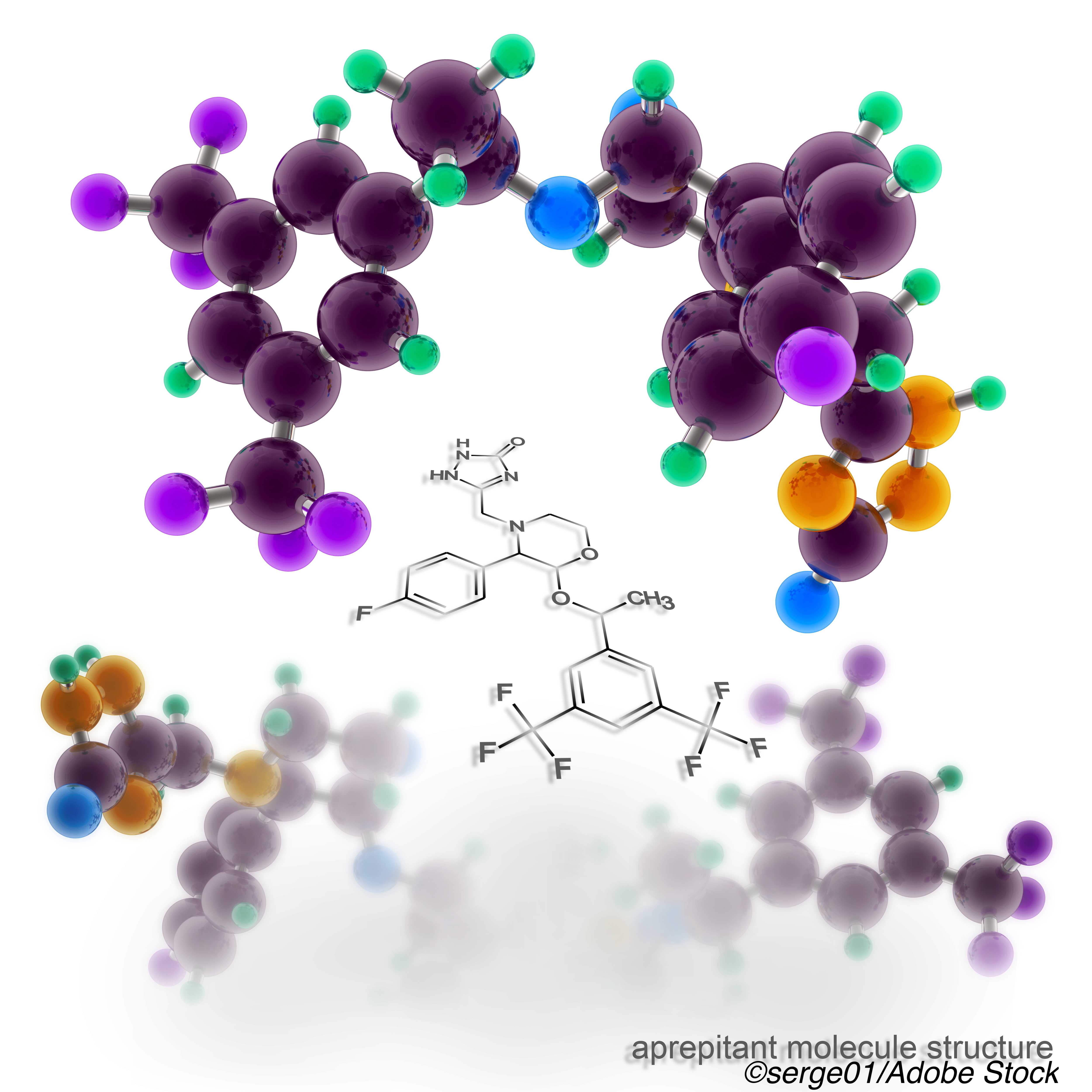
The addition of aprepitant to treatment with palonosetron and dexamethasone significantly decreased chemotherapy-associated nausea and vomiting (CINV) in young women with gastrointestinal cancer treated with FOLFOX or FOLFIRI chemotherapy, and was well tolerated, according to a phase III, double-blind, placebo-controlled, randomized clinical trial published in JAMA Network Open.
Importantly, these patients were all age 50 years and younger and reported little or no alcohol use.
“Previous studies have shown that the vomiting incidence in patients who received FOLFOX or FOLFIRI as first-line therapy was more than 40% for both chemotherapeutic treatments. In addition to chemotherapy regimens, CINV has been associated with patient-related risk factors, such as female sex and young age. The incidence of vomiting in these patients has been shown to be high even though they received a standard 2-drug antiemetic regimen consisting of dexamethasone and palonosetron, a highly effective 5-hydroxytryptamine-3 (5-HT3) receptor antagonist (RA),” according to De-Shen Wang, MD, of Sun Yat-sen University Cancer Center, Sun Yat-sen University, Guangzhou, People’s Republic of China, and colleagues.
Aprepitant is a neurokinin-1 (NK-1) RA, which selectively blocks substance P binding at the NK-1 receptor. Previous studies have shown that it effectively controls both acute and delayed CINV, but its use in patients treated with moderately emetogenic chemotherapy remains controversial.
For this study, they enrolled 248 young women 50 years old and younger (mean age: 40.1 years) with gastrointestinal cancer who had received FOLFOX (n=193) or FOLFIRI (n=50) chemotherapy. In all, 74.5% of patients had colorectal cancer, and 73.7% had stage IV gastrointestinal cancer.
Patients were randomized to treatment with either aprepitant (125 mg orally 60 minutes before chemotherapy on day one, 80 mg orally each morning on days two and three), palonosetron (0.25 mg IV), and dexamethasone (6 mg orally on same schedule as aprepitant); or placebo (placebo, 125 mg orally on same schedule as aprepitant), palonosetron (0.25 mg IV), and dexamethasone (12 mg orally 30 minutes before chemotherapy on day one).
Complete response (CR) rate was the primary end point, which Wang et al defined as the proportion of patients without episodes of emesis or rescue medication use during the first cycle of treatment.
Over the study, patients treated with aprepitant had significant higher CR rates compared with those in the control group (87.0% versus 66.7%, respectively; P<0.001). This was also true in the acute (92.7% versus 75.8%; P=0.001) and delayed (88.6% versus 70.0%; P=0.001) phases of the trial.
During the overall phase of treatment, the CR rate was significantly higher in patients who received FOLFOX and aprepitant versus placebo (89.8% versus 66.3%, respectively; P˂0.001). Among patients treated with FOLFIRI, the CR rate during the overall phase was not significantly higher in those treated with aprepitant vs placebo (76.0% versus 68.0%, respectively; P=0.53).
Significantly more patients treated with aprepitant compared with placebo had either no nausea (65.9% versus 49.2%; P=0.008; 16.7-percentage point difference) or no significant nausea (98.4% versus 92.5%; P=0.03; 5.9-percentage point difference) during the overall phase.
Wang and colleagues also found that more patients treated with aprepitant reported that CINV had a less negative effect on their daily lives within the five-day measurement period, and they had significantly higher quality of life (87.05 versus 66.7%, respectively; P˂0.001), as well as significantly better nausea domain scores (82.1% versus 63.3%; P=0.001; 18.8-percentage point difference), and vomiting domain scores (91.1% versus 68.3%; P˂0.001; 22.8-percentage point difference).
Adverse events were similar between the aprepitant and control groups (80.0% versus 81.3%, respectively; P=0.79). In both groups, the most common adverse events included myelosuppression, elevations of transaminase levels, anorexia, peripheral neurotoxicity, and fatigue. Grade 3 or 4 adverse events occurred in 20.0% of aprepitant patients, compared with 12.7% in the placebo group (P=0.13). Two patients in each group developed grade 4 neutropenia, and grade 4 leukopenia occurred in one patient in the placebo group. No grade 3 or 4 adverse events were associated with aprepitant treatment, and no grade 5 adverse event occurred in either group.
Upon multivariable analysis, researchers found that the only independent factor associated with CR during the overall phase of the study was treatment with aprepitant (OR: 3.42; 95% CI: 1.77-6.61; P˂0.001).
Limitations of the study included the limited evaluation of CINV prevention during the first course of chemotherapy, antiemetic effects in patients receiving FOLFIRI were not significantly better due to the small number of patients included, and the inclusion of only women younger than 50 years who drank no or little alcohol.
-
Adding aprepitant to palonosetron and dexamethasone was effective in reducing nausea and vomiting for women who received moderately emetogenic chemotherapy.
-
Administration of this regimen before chemotherapy initiation was well tolerated by younger women with gastrointestinal cancer who had a history of little or no alcohol consumption.
Liz Meszaros, Deputy Managing Editor, BreakingMED™
This study was supported, in part, through grants from the National Natural Science Foundation of China.
Wang reported no disclosures.
Cat ID: 120
Topic ID: 78,120,730,188,120,935,192,925


